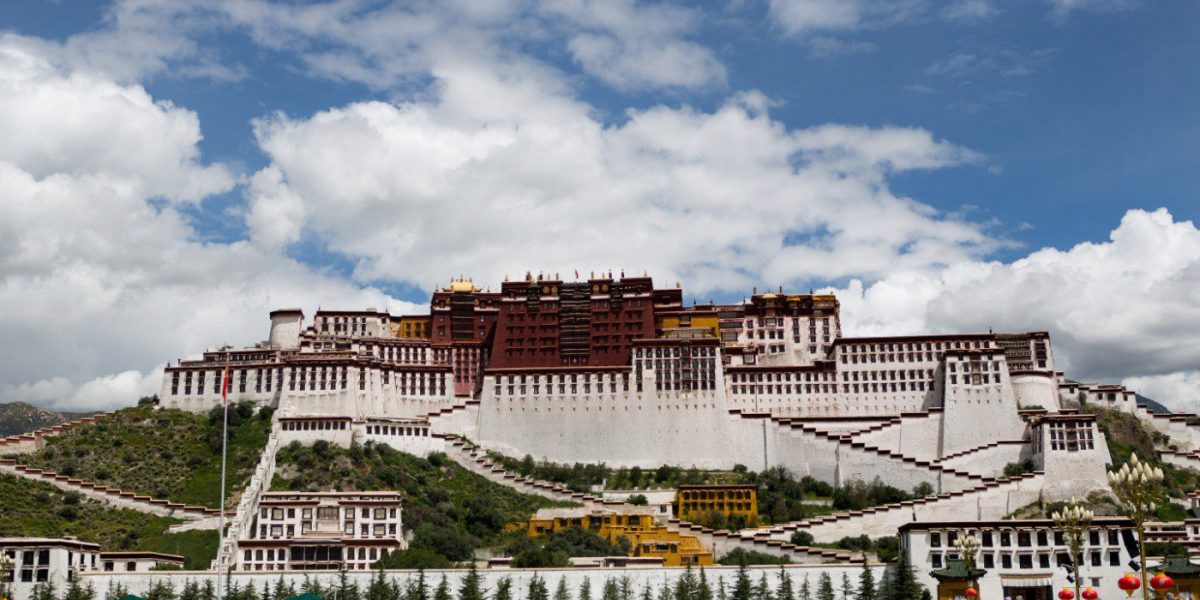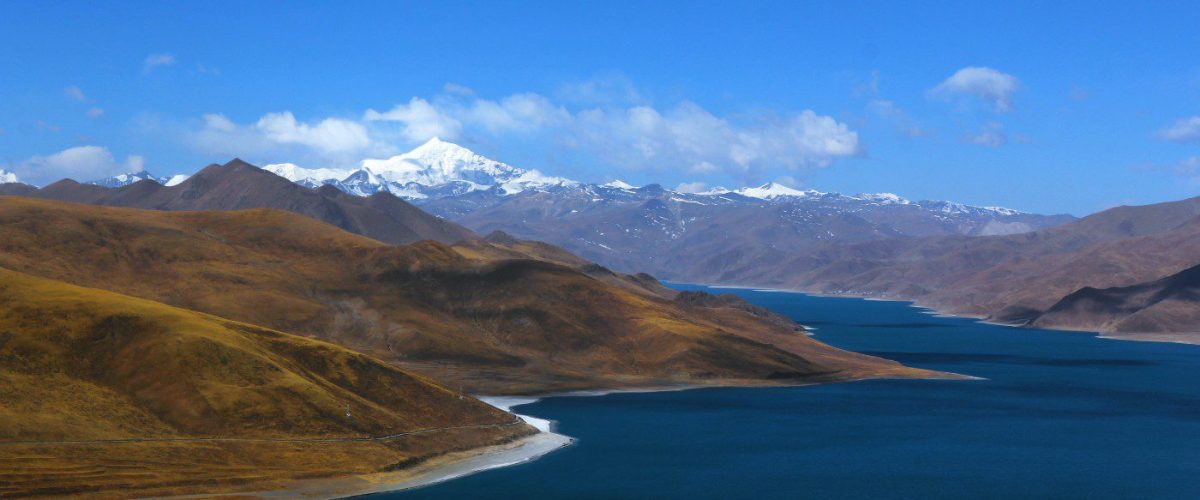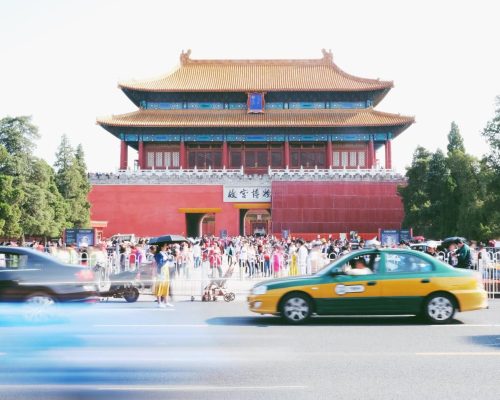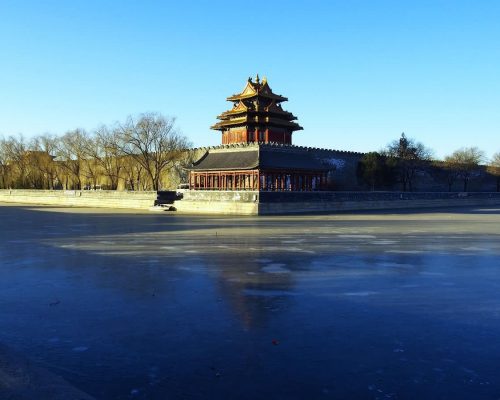Tibet 2025 A Traveler’s Guide

Embark on an extraordinary journey to Tibet, a land of breathtaking landscapes, spiritual depth, and cultural richness. Situated on the lofty Tibetan Plateau, this destination offers travelers a chance to explore ancient monasteries, vibrant festivals, and some of the most stunning natural wonders on earth. This guide will navigate you through the sacred heart of Asia, where every corner tells a story of faith, resilience, and beauty.
Table of Contents
Why Visit Tibet?
Tibet, often referred to as the “Rooftop of the World,” is a place where the heavens and earth meet. With its soaring Himalayan peaks, deep spiritual traditions, and unique cultural identity, Tibet offers an experience unlike any other.
A Spiritual Sanctuary
Tibet is a spiritual haven for seekers and adventurers alike. The region’s strong Buddhist traditions permeate every aspect of life, from the fluttering prayer flags to the monasteries that dot the landscape.
Natural Wonders Abound
Home to some of the world’s highest peaks, including Mount Everest, Tibet’s natural scenery is both dramatic and serene. Vast plateaus, turquoise lakes, and rolling grasslands provide endless opportunities for exploration and contemplation.
Where is Tibet? Show me the map!
Zoom in and out yourself to see where Tibet is located.

Lhasa: The Heart of Tibetan Buddhism
Lhasa, the capital of Tibet, is a city steeped in history and spirituality. It serves as the religious and cultural hub of the region, where ancient traditions are preserved with reverence.


Potala Palace: A Monument to Tibetan Heritage
The iconic Potala Palace, once the winter residence of the Dalai Lama, stands as a symbol of Tibet’s spiritual and political history. Its intricate architecture and sacred halls make it a must-visit for any traveler to Tibet.
Jokhang Temple: The Spiritual Center
Jokhang Temple, considered the most sacred temple in Tibet, is a focal point for pilgrims from all corners of the plateau. The temple’s rich history and religious significance offer a profound glimpse into the soul of Tibetan Buddhism.
Exploring the Tibetan Plateau
The Tibetan Plateau is an expanse of natural beauty and cultural diversity. Its remote monasteries, nomadic herders, and wild landscapes provide a stark contrast to the urban vibrancy of Lhasa.
Mount Everest: The Ultimate Challenge
No visit to Tibet is complete without witnessing the grandeur of Mount Everest. The north face of the world’s highest peak offers breathtaking views and a sense of awe-inspiring wonder.

The Serene Lakes of Tibet: Mirrors to the Sky
In the midst of the Tibetan Plateau’s rugged terrain lie serene lakes that are considered sacred by the local people. These bodies of water are not only stunning natural features but also spiritual symbols, reflecting the sky and mountains like mirrors to the heavens.
Lake Namtso: The Heavenly Lake

Lake Namtso, known as the ‘Heavenly Lake,’ is one of the most famous and beautiful in Tibet. As the highest saltwater lake in the world, it offers breathtaking views of crystal-clear waters set against a backdrop of snow-capped peaks. Pilgrims and travelers alike are drawn to its shores to marvel at its tranquility and spiritual significance.
Yamdrok Lake: A Turquoise Jewel

Yamdrok Lake, one of the three largest sacred lakes in Tibet, is famed for its stunning turquoise waters. Surrounded by rolling hills and traditional Tibetan villages, it’s a place where one can truly feel the ancient pulse of the plateau. The lake is said to be the transformation of a goddess, adding to its mystical allure.
Tibetan Festivals: A Celebration of Culture and Faith
Tibet’s calendar is filled with festivals that celebrate the region’s religious, cultural, and agricultural traditions. These events provide a colorful and joyous insight into the heart of Tibetan society.
Losar: The Tibetan New Year
Losar, the Tibetan New Year, is the most important festival in Tibet. Marked by prayers, performances, and family gatherings, it’s a time of renewal and celebration.
Saga Dawa Festival: Honoring Buddha's Life
The Saga Dawa Festival, held on the full moon of the fourth lunar month, commemorates the birth, enlightenment, and death of Buddha. It’s a time for prayer, pilgrimage, and acts of kindness.
Visit Tibet!
What’s included in all our tours to Tibet?
- Airport and train station pickup and drop service at designated time
- Tibetan experienced, knowledgable english-speaking guide
- Transportation whilst on tour
- 3 and 4 star hotels
- Welcome dinner in lhasa
- Breakfast
- Entrance fees
- All tibet traveling permits
- Daily bottled water
- Oxygen supply when needed
- Butter tea, sweet tea tasting
- Local family visit and a simple lunch
- Connections with lots of fun traveling people!
Spiritual Journeys: Monasteries and Pilgrimage Sites
Tibet is dotted with monasteries and sacred sites that have been destinations for pilgrimage and contemplation for centuries.
Samye Monastery: A Spiritual Birthplace
Samye Monastery, the first Buddhist monastery in Tibet, is a complex of stunning beauty and historical significance. Its unique design represents the Buddhist cosmology and attracts visitors from around the world.
Mount Kailash: A Sacred Pilgrimage
Mount Kailash, revered by Buddhists, Hindus, Jains, and Bon followers, is considered the most sacred mountain in Asia. Pilgrims undertake the challenging kora, a circumambulation of the mountain, as an act of spiritual devotion.
Tashilhunpo Monastery: A Beacon of Tibetan Buddhism
Nestled in the city of Shigatse, Tashilhunpo Monastery stands as a monumental beacon of Tibetan Buddhism. Founded in 1447 by the First Dalai Lama, it’s a historic and spiritual center that continues to be an active site for religious study and ceremonies. The monastery’s expansive complex, adorned with gold-topped temples and vibrant murals, provides an immersive experience into the religious art and architecture of Tibet.
A Glimpse into Monastic Life
Visitors to Tashilhunpo Monastery can witness the daily life of monks, from their scholarly debates to prayer sessions. The monastery houses the Maitreya Chapel, which features a towering statue of the Future Buddha, an impressive sight reflecting the artistic skill and spiritual devotion of the Tibetan people. The annual festivals held here, particularly the Buddha Thangka Unveiling, offer a vibrant display of faith and community spirit, drawing pilgrims and travelers into a profound cultural experience.
Rongbuk Monastery: At Everest's Doorstep
Rongbuk Monastery, the highest monastery in the world, offers a unique spiritual retreat with the breathtaking backdrop of Mount Everest’s north face. This modest yet profoundly serene monastery is a testament to the enduring spirit of Tibetan Buddhism, thriving in the shadow of the world’s tallest peak.
A Sanctuary in the Clouds
The journey to Rongbuk itself is a pilgrimage, traversing rugged terrain to reach a place of peace and solitude. Here, the spirituality of the region is palpable, with prayer flags fluttering in the wind and the stunning natural landscape inspiring a sense of awe and reverence. Visitors to Rongbuk Monastery are often moved by the simple yet profound lifestyle of the monks and nuns who reside here, their practices a testament to the strength and adaptability of the human spirit in even the most challenging environments. It’s a place where one can meditate on the impermanence of life and the eternal beauty of nature, surrounded by the majestic peaks that have drawn seekers and adventurers for centuries.

The Tibetan Way of Life: Traditions and People
The people of Tibet are the soul of the region. Their traditions, lifestyle, and hospitality offer an enriching experience for visitors seeking a deeper understanding of human resilience and cultural diversity.
Nomadic Heritage
Tibet’s nomadic herders maintain a way of life that has existed for millennia. Visiting these communities provides a glimpse into their daily routines, traditional dwellings, and the challenges they face in a rapidly changing world.
Arts and Crafts
Tibetan arts and crafts, including Thangka painting, prayer wheel crafting, and intricate jewelry, reflect the region’s spiritual depth and artistic heritage. Engaging with local artisans offers a unique opportunity to appreciate and support these ancient crafts.

Navigating the High Altitude: Health and Safety
Traveling in Tibet requires preparation, especially due to the high altitude and remote locations. Understanding how to stay healthy and safe is crucial for a successful journey.
Acclimatization
Take time to acclimate to the high altitude of Tibet to avoid acute mountain sickness. Gradual ascent and rest days are key to enjoying your trip without health complications.
Travel Permits and Regulations
Tibet has specific travel regulations, including the requirement for permits and travel with a licensed tour guide. Ensure you have all necessary documentation and arrangements in place before your journey.
Tibetan Cuisine: A Taste of the Plateau
Tibetan cuisine is a reflection of the region’s geography and culture. Simple yet nourishing, the food is an integral part of the Tibetan experience.
Staples of the Tibetan Diet
- Tsampa (Roasted Barley Flour): A versatile and filling staple, often mixed with butter tea.
- Butter Tea: A rich, salty tea that provides energy and warmth in the cold climate.
- Yak Meat: A common protein source, yak meat is enjoyed in various forms, from stews to dried jerky.
Trying Local Delicacies
Embrace the local dining culture by trying dishes like momo (Tibetan dumplings) and thukpa (noodle soup). Local eateries and teahouses are the best places to savor these traditional foods.
When to Visit Tibet: Seasons and Climate
Tibet’s high altitude and unique topography result in a distinct climate that varies greatly across the region and throughout the year. Understanding the seasonal changes is crucial for planning your visit, ensuring you experience the best of what Tibet has to offer.

Summer: The Peak Season
Summer (June to August) is the warmest and most vibrant time to visit Tibet. The climate is relatively mild, and the landscapes come alive with blooming flowers and lush greenery. It’s an excellent time for outdoor activities such as trekking and exploring rural areas. However, this is also the rainy season, particularly in July and August, so be prepared for sudden showers and changes in weather.
Festivals and Cultural Events
Summer is also a time of celebration in Tibet. Numerous festivals, including the Shoton Festival and the Nagqu Horse Racing Festival, take place, offering visitors a chance to experience Tibetan culture at its most lively and colorful. These events provide a unique insight into local traditions, music, and dance.
Spring and Autumn: The Shoulder Seasons
Spring (April to May) and autumn (September to October) are considered the best times to visit Tibet for several reasons. The weather during these months is generally stable and clear, with less rain and comfortable temperatures. The visibility is high, making it an ideal time for photography, particularly of the stunning mountain ranges.
Natural Beauty in Bloom
In spring, the ice and snow begin to melt, and the plateau is dotted with wildflowers and vibrant colors. Autumn, on the other hand, brings a golden hue to the landscape, with clear blue skies and the changing colors of the foliage. Both seasons offer a spectacular display of Tibet’s natural beauty.

Winter: The Quiet Season
Winter (November to March) in Tibet is cold, with temperatures often dropping below freezing. However, it’s also the quietest time to visit, with fewer tourists and a more peaceful atmosphere. The winter landscape is stark but beautiful, with snow-capped mountains and clear, crisp air.
Advantages of a Winter Visit
Visiting Tibet in winter allows for a more intimate experience with local culture and traditions. It’s also an excellent time for budget travelers as prices for accommodations and tours tend to be lower. Moreover, some of the most significant religious festivals, such as the Tibetan New Year (Losar), occur during this time, providing a deeper insight into the spiritual life of the region.
Visit Tibet!
What’s included in all our tours to Tibet?
- Airport and train station pickup and drop service at designated time
- Tibetan experienced, knowledgable english-speaking guide
- Transportation whilst on tour
- 3 and 4 star hotels
- Welcome dinner in lhasa
- Breakfast
- Entrance fees
- All tibet traveling permits
- Daily bottled water
- Oxygen supply when needed
- Butter tea, sweet tea tasting
- Local family visit and a simple lunch
- Connections with lots of fun traveling people!
Preparing for Your Visit
Regardless of when you decide to visit, it’s essential to prepare adequately for Tibet’s high altitude and variable climate. Ensure you have the necessary clothing and gear for the season, and plan for altitude acclimatization to make your trip as enjoyable and safe as possible. Additionally, always stay updated on travel regulations and permit requirements, as these can change based on the season and political climate.
Choosing the right time to visit Tibet can significantly impact your experience. Each season offers something unique, from vibrant festivals and blooming landscapes to serene winter beauty. By understanding the nuances of Tibet’s seasons and planning accordingly, you can ensure your journey to the Rooftop of the World is both memorable and fulfilling.

Responsible Travel: Preserving Tibet's Heritage
As a sensitive and ecologically fragile region, it’s essential to approach travel in Tibet with respect and mindfulness.
Cultural Sensitivity
Respect local customs, religious traditions, and community rules. Dress modestly, ask for permission before taking photos, and follow guidelines when visiting sacred sites.
Minimize your ecological impact by reducing waste, staying on designated paths, and supporting conservation efforts. Your actions can help preserve Tibet’s natural and cultural heritage for future generations.
Tibet is a land of wonder and wisdom, where the sky-reaching mountains and deep-rooted spirituality create a tapestry of unforgettable experiences. Whether you’re seeking adventure, tranquility, or a deeper understanding of humanity’s diverse cultures, Tibet offers a journey that will move your spirit and inspire your soul. As you plan your visit to this extraordinary place, embrace the opportunity to step into a world that transcends the ordinary and invites you to discover the magic that lies at the rooftop of the world.

Traveling with a Travel Agent
Exploring Tibet can be a complex but rewarding experience. A travel agent is obliged in Tibet and will also provide valuable assistance and insight, making your trip smoother and more enjoyable.
Expert Guidance
A travel agent can help you navigate the intricacies of traveling in China, from language barriers to transportation. They can also provide insights into the local culture and history that you might not discover on your own.
Access to Hidden Gems
With a travel agent, you’ll have access to places and experiences that aren’t always available to independent travelers. They can take you off the beaten path to see the real Tibet.
Why choose ExperienceTibet?
Reliable
See more.
Have fun.
Why travel to Asia? Because its just awesome.











Learn more before you travel.
FAQ
How does a breakfast look like in our selected hotels? How dangerous are Chinese roads? What is a common tip to give in restaurants? Read it here.
Contact us
For instant support, scan our QR code to connect with us on WeChat. We pride ourselves on quick responses, so you can expect a prompt reply to any inquiries or concerns.

Please note that we always do our utmost best to reply as soon as possible to your questions. If you don’t get an answer from us within 48 hours, please try to e-mail or call us again. Kind regards, Jessie (owner of ExperienceTibet.org)
© 2025 – Experience Tibet | All rights reserved.



